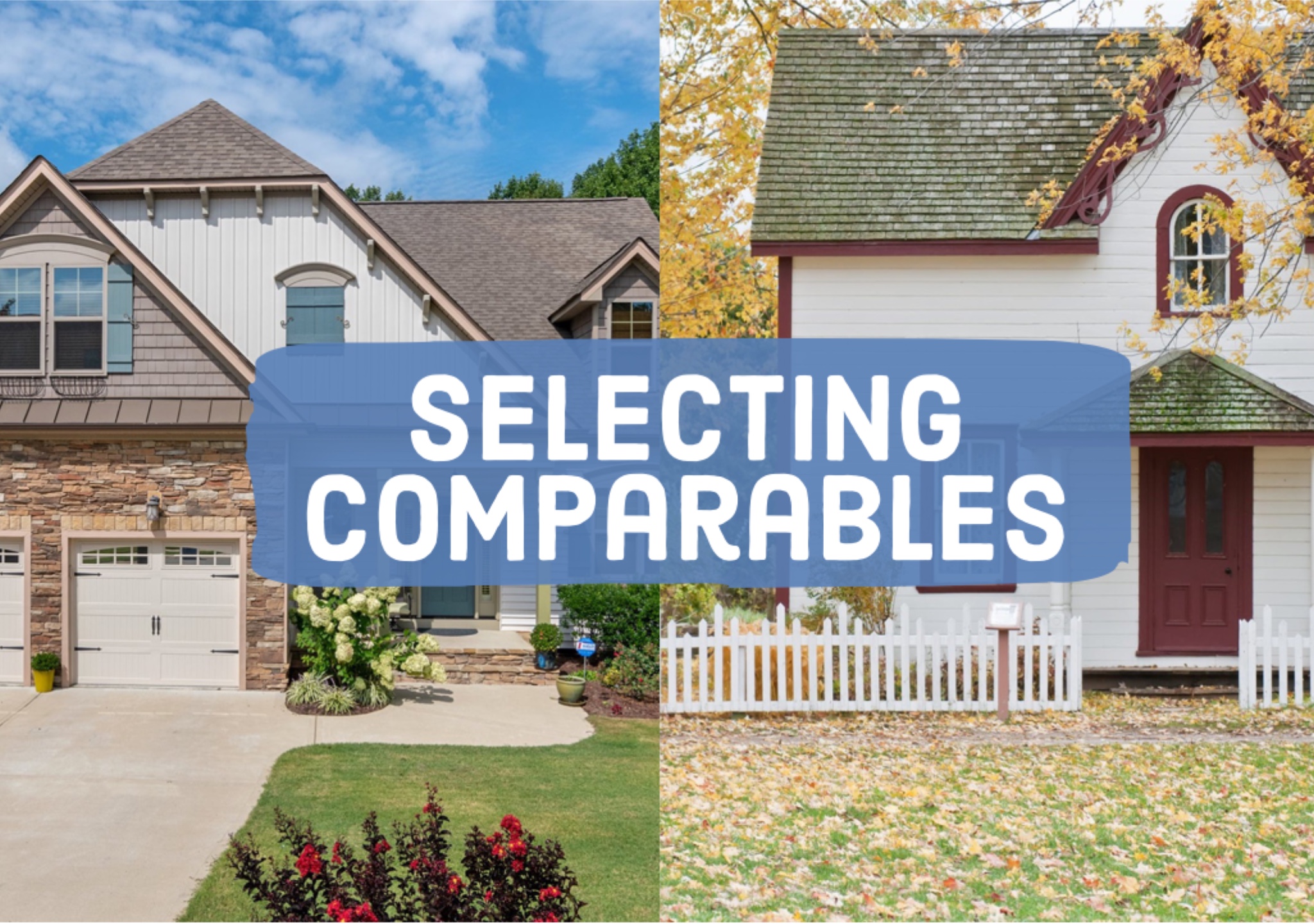Real estate appraisers must consider many factors when determining a property’s worth. One of the key components is selecting comparable properties. This process can be tricky. As there are many factors to consider and it requires more than just finding homes with similar square footage. Let’s look at some of the criteria for how to select good comparables for appraisals.
What is a Comparable?
A comparable is a property that has recently sold in the same market as the one being evaluated. The more similar the comparable is to the subject property, both in terms of location and physical attributes, the more accurate an appraisal will be. Comparing properties side by side allows appraisers and agents/brokers to draw conclusions about a property’s worth based on its relative differences and similarities with other properties that have recently sold.
Location, Location, Location
The location of a comparable is paramount when valuing a property. If two homes have the same square footage but one is located in a better school district or close to public transportation. It will most likely be worth more than the other home. Similarly, if one home is on a busy street and another is tucked away on a quiet cul-de-sac. These differences need to be taken into account as well.
Age & Condition Matter Too
In addition to location, age and condition are important factors that appraisers must consider when selecting comparables. Comparing two homes of equal size but different ages could result in an inaccurate appraisal. If the older home has been remodeled or updated while the other remains unchanged since its original construction date. It’s important to compare properties that are relatively similar in terms of age and condition. So that you get an accurate representation of value for your appraisal report.
Utilizing Data Sources
Fortunately, there are plenty of data sources out there that can help make selecting good comparables easier. Online databases like NyStateMLS provide detailed information about properties including sale prices and other relevant data points such as square footage or lot size. There are also organizations like CoreLogic which specialize in collecting real estate data from public records and other sources. So they can provide access to detailed insights into local markets and trends over time. This kind of data can be invaluable when evaluating complex markets with many different variables at play.
Amenities & Features Count Too
If two homes have similar square footage, age, and condition but one has luxury amenities like a pool or gourmet kitchen, this added value needs to be taken into account when comparing them as comparables for an appraisal report. This can also apply to exterior features such as decks or patios—these all add value and need to be factored into how to select good comparables for appraisals.
In Conclusion
Ultimately, selecting good comparables for real estate appraisals requires taking many factors into consideration beyond just basic specs like square footage and number of bedrooms/bathrooms. By considering things such as location, age/condition of properties compared, and any additional amenities or features each property offers can help ensure accurate results every time you complete an appraisal assignment. With thorough research and careful consideration of all these criteria, you’ll be able to select great comparables every time!
Related Blog Posts
Join Over 100,000 Students Enjoying Manfred School Now
Become Part of Manfred School to Further Your Career.





